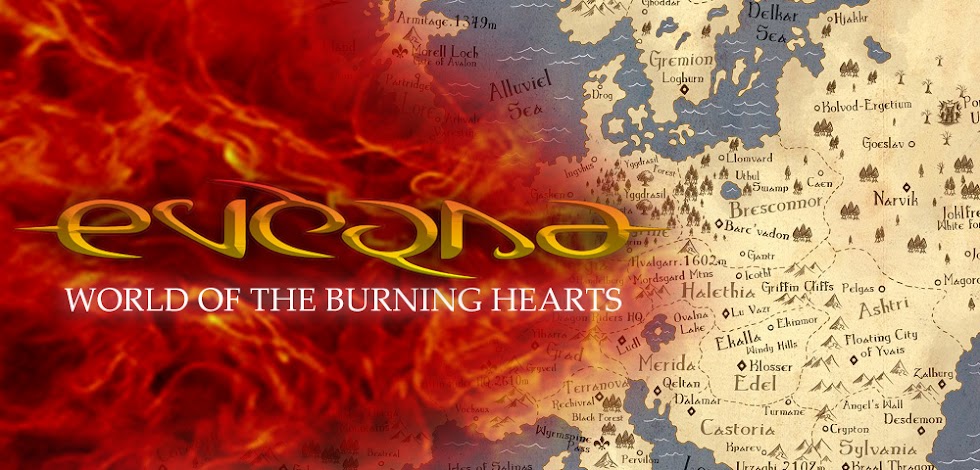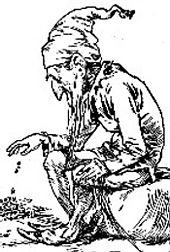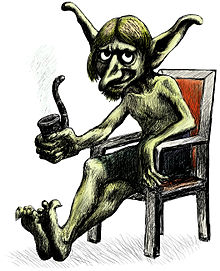Cinta Beda Alam, Cinta Sejatikah?
Andry Chang
VadisReview – Artikel Umum dan Resensi Novel “A Girl Who Loves A Ghost” –
Alexia Chen
Cinta dan hubungan asmara sungguh banyak ragamnya dan penuh
warna. Salah satu bentuknya yang sedang trend
adalah LDR (Long Distance
Relationship), Hubungan Asmara Jarak Jauh. Dalam hubungan jenis ini,
sepasang kekasih yang tinggal amat berjauhan, bahkan beda negara bisa membina
hubungan asmara. Walau jarang bertemu langsung, pasangan LDR dapat memanfaatkan
perangkat-perangkat telekomunikasi canggih agar bisa terus berinteraksi,
seperti internet, webcam dan
semacamnya.
Nah, bagaimana bila jarak yang memisahkan pasangan kekasih
itu terlalu jauh, bahkan beda alam? Jangankan sarana transportasi, internetpun
mustahil dapat digunakan. Satu-satunya cara berinteraksi adalah lewat sarana
supranatural, misalnya kemampuan melihat makhluk gaib, misalnya hantu.
Pertanyaannya, bisakah Hubungan Asmara Beda Alam atau RDR (Realm Differential Relationship) ini
berlanjut ke jenjang yang lebih tinggi? Bersatu dalam ikatan pernikahan,
misalnya? Jawabannya bisa saja, namun pernikahan seperti ini sama sekali tak
wajar, tak diakui oleh masyarakat, dosa besar menurut ajaran agama manapun, dan
menyalahi hukum alam. Dan yang terparah, menentang kodrat yang digariskan oleh
Yang Maha Kuasa.
Tentunya, baik dalam ranah fiksi maupun kejadian
aneh-tapi-nyata, fenomena atau sindrom Cinta Beda Alam (RDR) ini cukup banyak
diekspos. Sebut saja novel “The Ghost Bride (Mempelai Hantu)” dan film
legendaris Hollywood “Ghost”. Juga novel anyar karya Alexia Chen berjudul “A
Girl Who Loves A Ghost”. Saya sendiri pernah membahas sindrom yang sejenis
dalam cerpen “Legenda Li Junyang”. Dalam kisah ini, seorang wanita tinggal dan
tidur bersama jenazah suaminya. Di dunia nyata, beberapa kejadian
aneh-tapi-nyata orang yang tinggal dan menikahi mayat pernah terjadi di Inggris,
Malaysia dan sebagainya, yang tentunya pernah saya baca dan saya ingat. Taruhlah
saya percaya hubungan mereka nyata, tak sekedar obsesi belaka. Tapi benarkah
mereka sungguh bahagia hingga akhir hayat?
Jadi, mungkinkah ada cinta sejati dalam Hubungan Asmara Beda
Alam? Jawabannya, mungkin saja. Tergantung seberapa kuat rasa cinta,
kepercayaan dan ketulusan hati si orang yang masih hidup dengan pasangannya,
secara timbal-balik. Entah apakah tindakan mereka itu gila, sangat aneh atau
tak dapat diterima akal sehat, biasanya perasaan yang bisa timbul dari hubungan
ini cenderung sangat kuat, ekstrim dan cenderung obsesif. Tentu saja
sebab-musabab terjadinya RDR juga menjadi faktor penentu kadar cinta yang
dihasilkannya. Entah karena pasangan yang semula wajar, lalu salah satunya
meninggal dunia, atau seperti di novel AGWLAG (A Girl Who Loves A Ghost), di
mana si gadis, Aleeta Jones justru tertarik setelah melihat sosok Nakano Yuto,
seorang pemuda korban pembunuhan dan perampokan yang telah menjadi arwah
penasaran.
Namun, walau sekuat apapun perasaan pasangan RDR, walau mereka
menemukan cinta sejati, hubungan mereka takkan bisa berlanjut secara wajar.
Baru-baru ini ada berita heboh di Indonesia tentang upacara pernikahan seorang
pria dengan makhluk halus dari alam gaib. Tentu saja ini memancing kontroversi
karena dan tak wajar dan menyalahi segala norma yang berlaku. Walau pria itu
tampaknya bahagia, apa dia benar-benar terus demikian hingga hari tuanya?
Jadi, bilamana salah satu kekasih masih ingin hidup dengan
wajar dan bermakna, dia harus belajar melepas pasangannya yang beda alam itu. Caranya,
bisa saja selama “kebersamaan” mereka, pasangan ini bahu-membahu menyelesaikan “urusan
yang tertunda” atau “hal yang membuat penasaran” si arwah penasaran, membuka
jalan agar si arwah itu bisa berpindah ke alam baka, tak terperangkap terus sebagai
hantu di dunia fana.
Contohnya, dalam novel karya Alexia ini, pasangan kekasih
beda dunia, Yuto dan Aleeta bisa bahu-membahu menyelesaikan segala masalah yang
membuat Yuto jadi arwah penasaran. Termasuk mungkin, seluk-beluk tentang
pembunuhan Yuto yang bisa saja bukan murni perampokan. Masyarakat dan
lingkungan pasti menganggap Aleeta gila dan cenderung mengucilkannya, alih-alih
membantu. Namun, bukankah cinta itu “buta” dan “gila”?
Walaupun Aleeta dan Yuto galau karena tahu mereka tak bisa
bersama, namun perasaan di antara mereka malah makin kuat dengan adanya “misi”
ini. Walaupun cinta mereka bagai api lilin yang sewaktu-waktu bisa padam
dihembus angin, justru kesementaraan inilah yang melahirkan cinta sejati,
seperti bunga sakura yang mekar paling indah dan amat sebentar, sebelum akhirnya
layu selama-lamanya.
Namun, akibat buruk bisa saja terjadi pada Aleeta-Yuto dan pasangan-pasangan
RDR pada umumnya. Salah satunya, bila pihak yang masih hidup, Aleeta misalnya
tak mampu mengendalikan obsesinya, “kegilaan semu” itu bakal meledak jadi
kegilaan nyata dan permanen. Yang terburuk, Aleeta bisa jadi bakal nekad
mengambil jalan pintas agar bersatu dengan kekasihnya di alam baka.
Satu lagi cara penanganan sindrom RDR ini, pasangan beda
alam butuh figur pendukung yang mampu berpikir melebihi logika, percaya pada
keduanya dan bersedia membantu mereka dengan sepenuh hati, membimbing mereka ke
jalan yang benar. Tak harus figur cenayang seperti di film “Ghost”, dan orang
itu bisa punya kemampuan melihat hantu atau tidak.
Mengapa butuh pendukung?
Supaya pada akhirnya, saat api lilin cinta harus padam, kembali pada
keseimbangan alami, masing-masing kekasih tak perlu bersama-sama mengambil jalan pintas ke alam baka
seperti Romeo dan Juliet. Dengan demikian, pembaca akan mendapatkan hikmah
positif dari fenomena kisah cinta yang dicontohkan oleh Aleeta dan Yuto ini.
Akhir kata, sekali lagi saya sampaikan. Biarlah cahaya lilin terpancar secerah matahari sebelum padam
selamanya, meninggalkan kehangatan pada siapapun yang terjamah cahayanya.
Dan bagi semua insan yang sedang mencinta,
ingatlah. Nikmatilah cinta
sebaik-baiknya selama waktu kebersamaan yang ada, namun jangan lupa dunia
bukanlah hanya milik berdua.
"A GIRL WHO LOVES A GHOST"
A novel by Alexia Chen
“Kenyataan bahwa aku bukan lagi menjadi bagian dari
dunia ini nyaris menghancurkanku. Jiwaku perlahan rusak oleh dendam dan amarah,
hingga gadis itu muncul dan menemukanku.”
“Apa yang akan kau lakukan jika kau ternyata melihat
sesuatu yang sebenarnya tidak nyata? Seperti misalnya, sesosok hantu berparas
tampan? Bagaimana reaksimu seandainya kau terlambat menyadari bahwa kau telah jatuh terlalu dalam untuk
bisa menemukan jalan kembali? Manakah yang lebih bijaksana, mengarungi neraka
demi sebuah akhir bahagia ataukah menyerah dengan melepaskan? Apa yang akan kau
lakukan jika kau jadi aku?”
-----------------------------------------------
ISBN: 978-602-70105-4-3
Harga Rp 80.000,- (552 hlm.)
Penerbit: Javanica
Email: ptkaurama@gmail.com
Pemesanan bisa melalui e-mail di atas atau HP: 081993817721.
Untuk preview novel ini, kliklah link berikut ini:
Sumber gambar:
Bawah: Cover "A Girl Who Loves A Ghost" dari Javanica.
 A Girl Who Loves A Ghost
A Girl Who Loves A Ghost by
Alexia Chen
My rating:
4 of 5 stars
View all my reviews


















